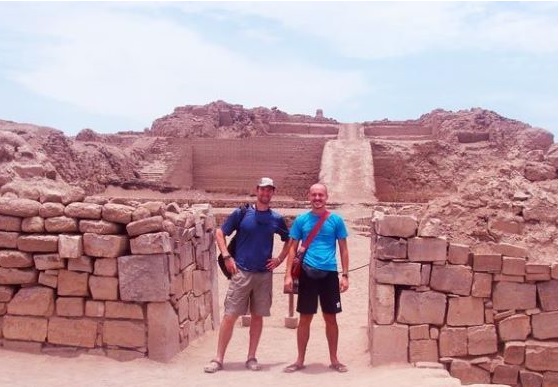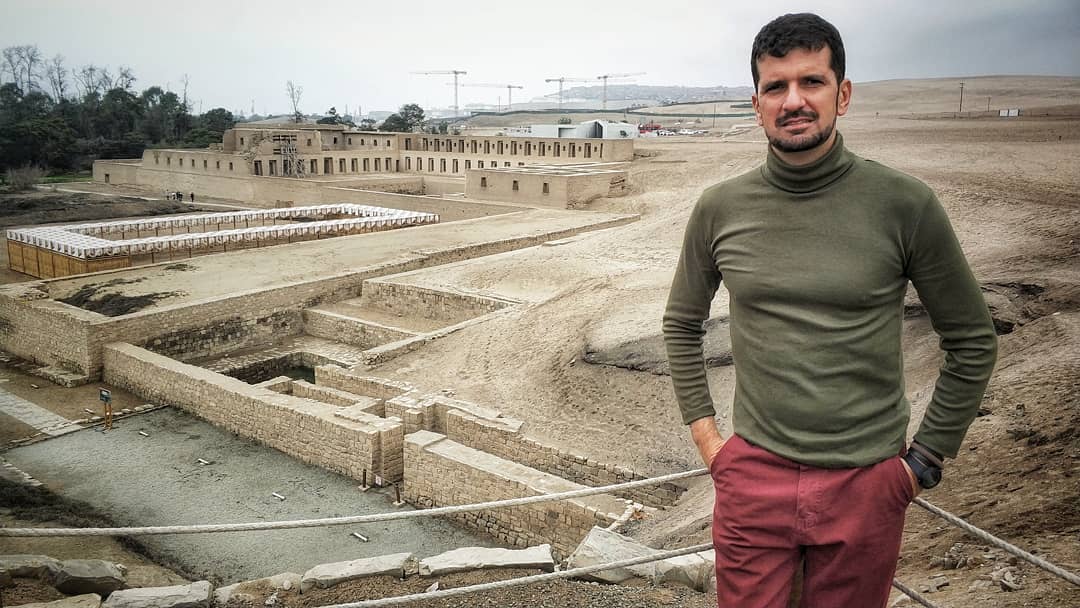Hello bloggers, today we are going to talk about the archaeological site of Pachamac in LIma, Peru. Find out more by reading the blog.
Archaeological site Pachacamac:


Pachacamac in Perú is one of the largest and most important archaeological sites in Perú, and in its time it was the most consulted huaca (oracle) in the Andean world, leaving a deep mark that continues to this day.
The god Pachacamac
Pachacamac was the main oracle of the coast, and it was said that he was the creator of all things and the force that animated all living beings. In the declarations, chronicles and documents of extirpation of idolatries written in the middle of the 16th century by the Spaniards, the site of Pachacamac and the god of the same name are mentioned repeatedly.
As a “maker of the world” and creator of people, plants, animals and everything else in the world, Pachacamac is linked to various elements of nature, such as water, and other phenomena, such as tremors, very common on the Pacific coast. From Peru. However, far from being the one who protects people from telluric movements, he was the one who provoked them and who had to be pleased and offered so that he did not send such a scourge.
Pachacamac is also present in the myths and legends, both of the coast and of the Sierra de Lima. The myth collected by Father Luis de Teruel in 1617 in a campaign to extirpate idolatries and included in the work “Chronicle Moralized of the Order of San Agustín” written by Fray Antonio de la Calancha, printed in Barcelona in 1638, stands out.
Ruins of Pachacamac:
The ruins of Pachacamac were built on the right bank of the Lurín valley, very close to the river of the same name, very close to the sea and in front of a set of small islands that are named after this sanctuary. The ruins of Pachacamac are a large architectural complex with many buildings that were built at different times, from the early years of our era to the 16th century.
Composition of ruins of Pachacamac:
Its major architectural structures are the following:
- Temple of the Sun, the most imposing construction erected by the Incas.
- Temple of the Moon or Acllahuasi, also from the Inca period. It was restored by J. C. Tello, who called it Mamaconas.
- Old Temple, the oldest of the Lima culture, is currently in ruins.
- Painted Temple, from the Huari period.
- Tauri Chumpi building, where presumably the last local governor of the Inca period stayed.
- Regional nunciatures or set of pyramids with ramps, from the Ichma culture.
- Pilgrims’ Square, from the Inca period.
You can visit the buildings, temples, squares and the site museum, which preserves valuable pieces found in this place.
Pachacamac site museum in Lima


The archaeological sanctuary has a Pachacamac site museum in Lima that was originally founded by Arturo Jiménez Borja in 1965 and reopened on February 15, 2016 with a modern building. 1 2 3
It has a collection of more than 6,500 pre-Hispanic pieces of various materials such as ceramics, wood, metal, and textiles. One of the emblematic pieces of the museum is the idol of Pachacamac.
General information
Location: Old South Pan-American Highway Km. 31.5, Lurin – Lima
Customer service hours:
- Monday is closed for maintenance and cleaning of the rooms.
- Tuesday to Saturday from 9:00 a.m. at 5:00 p.m. (Ticket sales until 4:15 pm)
- Sundays from 9:00 a.m. at 4:00 p.m. (Ticket sales until 3:15 pm)
Regulations for the Visitor to the Pachacamac site museum in Lima and Archaeological Sanctuary
- Pets are not allowed, except guide or assistance dogs.
- It is not allowed to enter with food and drink liquids during the visit to the museum’s exhibition rooms.
- It is forbidden to enter the exhibition hall with tripods and selfie sticks.
- Smoking is prohibited in the museum (Law No. 29517).
- It is strictly forbidden to walk outside the archaeological circuit.
- Visitors are requested to respect the restrictive signs, for their own safety.
- Please help clean up the sanctuary by discarding your masks, gloves, and other personal protective equipment in the designated bins.
- The Pachacamac Site Museum reserves the right to withdraw anyone who does not respect the regulations, people who do not observe good customs or violate the safety and well-being of visitors and the heritage assets of the site.
Barrier-free museum:
Since 2016, the Pachacamac site museum in Lima has implemented a care plan for people with physical and visual disabilities that will allow the full and effective participation of our visitors through sensory and cognitive activities. This plan was presented at the inauguration of the new Museum on February 15, 2016.
The Museum has a location map and descriptive guides in Braille system for the tour in the permanent exhibition room. This information is available to users when entering the showroom.
We offer wheelchairs for visitors with a mobility impairment. Wheelchairs can be requested free of charge by leaving an identity card at the museum ticket office. Museum wheelchairs cannot enter the archaeological zone.
For the elderly and people with disabilities who wish to visit the archaeological sanctuary and do not have mobility, we offer electric carts that will allow them to enjoy a visit through the archaeological circuit. The service, prior coordination at the ticket office, is free.
Contact Us:
For more information, please contact us DREAMY TOURS, we will be happy to answer all your questions about Peru, Bolivia and Chile.
We are a Travel Agency specialized in tours, packages, if you need some information, please write to us.
We offer tours, excursions – Peru – Bolivia – Chile:










